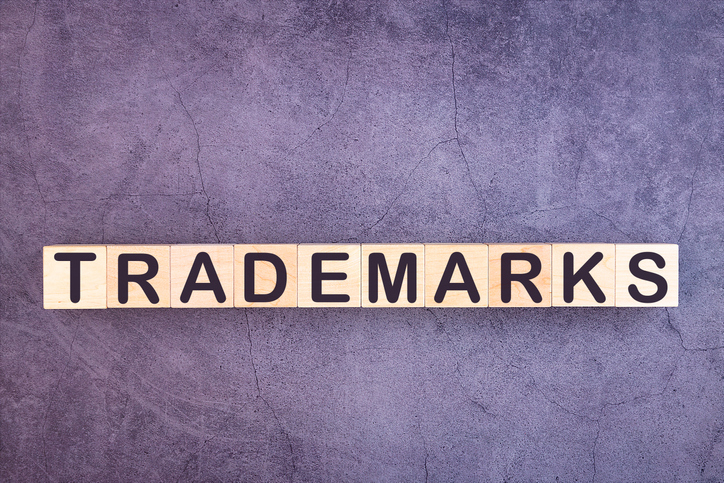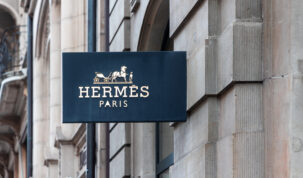Provisions enacted alongside China’s recently amended Trademark Law seek to effectively regulate bad-faith trademark filings including penalties through the nation’s social credit system
In response to the bad-faith application regime, the China National Intellectual Property Administration (CNIPA) published Several Provisions for Regulating the Application for the Registration of Trademarks (Draft) on February 12, 2019. The State Administration for Market Regulation (SAMR) announced the implementation of the Provisions on October 11, 2019, which came into effect on December 1, 2019. The Provisions aim to regulate and combat irregular trademark registration activities in China and are in line with the latest PRC Trademark Law, which went into effect on November 1, 2019.
Background
China has worked hard in recent years to optimise trademark registration procedures, resulting in a shortened registration period, reduced costs and overall ease in obtaining trademark registrations. However, this efficiency has come at a price, with an increase in bad-faith filings that adversely affect market order and trademark administration. The situation has also become a widely debated topic in society. The PRC Trademark Law was revised and promulgated on April 23, 2019 (wef November 1, 2019) to curb and tackle bad-faith filings. To ensure the smooth implementation of the revised Trademark Law and effectively regulate bad-faith trademark filings, the Provisions concern the different types of bad-faith applications that exist, measures that can be taken according to the PRC Trademark Law, additional measures that go beyond the scope of the Trademark Law and guidance for IP authorities to report and supervise bad-faith applications.
Articles 1 and 2 of the Provisions clarify the legal purposes and reaffirm the principle of good faith established by the revised PRC Trademark Law.
Honesty and credibility principle
Regulating applications against the principle of honesty and credibility are scattered throughout several articles in the PRC Trademark Law. The Provisions set out the types of behaviours that violate the honesty and credibility principle. Article 3 of the Provisions clarifies the requirements when applying for trademark applications, provides a clearer basis for trademark examination and enforcement as well as guidance to the public. There are six clauses under Article 3 in which applications for marks can be deemed against the honesty and credibility principle:
- Malicious applications for trademark registrations not for the purpose of use, as provided for in Article 4 of the Trademark Law;
- Reproducing, imitating or translating the well-known trademarks of others, as provided for in Article 13 of the Trademark Law;
- Applying by an agent or representative for registration of trademarks of a party under agency or representation without authorisation, or applying for registration of others’ trademarks while knowing, by way of contract, business exchange relationship or other relationships, that such trademarks are already in prior use as provided for in Article 15 of the Trademark Law;
- Infringing upon the existing prior rights of others or using improper means to pre-emptively register trademarks that are already in use by others and have certain influence, as provided for in Article 32 of the Trademark Law;
- Applying for registration of trademarks by deception or other improper means; or
- Committing other acts which violate the principles of honesty and credibility, public order and good custom or have other adverse effects.
Trademark agencies
To regulate the behaviour of trademark agencies and improve the market, Article 4 of the Provisions clarifies requirements for trademark agencies:
A trademark agency shall follow the principles of honesty and credibility. Where it knows or should know that the client’s application for trademark registration falls under any of the following circumstances, it shall not accept the assignment:
- Malicious applications for trademark registrations not for the purpose of use, as provided for in Article 4 of the Trademark Law;
- Applying by an agent or representative for registration of trademarks of a party under agency or representation without authorisation, or applying for registration of others’ trademarks while knowing, by way of contract, business exchange relationship or other relationships, that such trademarks are already in prior use, as provided for in Article 15 of the Trademark Law; or
- Infringing upon the existing prior rights of others or using improper means to pre-emptively register trademarks that are already in use by others and have certain influence, as provided for in Article 32 of the Trademark Law.
Except for trademark agency services, the trademark agency shall not apply for trademark registrations in respect of any other field, nor disrupt the market order through improper means.
Malicious trademark applications
Article 8 of the Provisions stipulates that to determine whether an application for trademark registration is in violation of Article 4 of the PRC Trademark Law, the CNIPA shall consider the following factors:
- The number, designated Classes, transaction situation of trademark applications/registration filed by the applicant or any individual, legal entity or other organisations associated with the applicant;
- The business scope and operational situation of the applicant;
- The situation of the applicant who has engaged in bad-faith applications for trademark registration or infringing upon others’ exclusive trademark right determined by previous effective administrative decisions/rulings or judicial judgments;
- Applying for registration of a trademark identical with or similar to that of the same subject with certain popularity belonging to others;
- Applying for registration of a trademark identical with or similar to any name of a well-known person, tradename, abbreviation of a trade name or any other commercial sign; and
- Other factors that the CNIPA considers should be taken into account.
Legal consequences
The Provisions list several punishments and consequences for filing irregular trademark applications, spread over 10 articles. Some of these punishments and consequences include:
- Article 12: For an applicant who applies for trademark registration in violation of Article 3 of the Provisions, the administrative department for market regulation at or above the county level of the place where the applicant is located or where the violation takes place shall give a warning, impose a fine and other administrative penalties in the light of the seriousness of the circumstances and in accordance with Article 68(4) of the PRC Trademark Law. Where there is illegal gain, a fine of three times but no more than CNY 30,000 (USD 4,200) may be imposed and in cases that involve no illegal gains, a fine of up to CNY 10,000 (USD 1,400) may be imposed.
- Article 13: Where a trademark agency violates Article 4 of the Provisions, the administrative department for market regulation at or above the county level of the place where the trademark agency is located or where the violation takes place shall, in accordance with Article 68of the PRC Trademark Law, order the trademark agency to make corrections within a specified time limit, give a corresponding warning and impose a fine of CNY 10,000 (USD 1,400) up to CNY 100,000 (USD 14,000). For the person in charge and other persons with direct responsibility, a warning shall be given and a fine of CNY 5,000 (USD 700) up to CNY 50,000 (USD 7,000) may be imposed. If the violation constitutes a crime, criminal responsibility shall be affixed. Where the circumstances are serious, the intellectual property administrative department may decide to stop accepting business from that trademark agency and make a public announcement.
- Article 14: Government departments which make decisions on administrative penalties shall publicise the penalty information to the public through the social credit system.
Supervising bad-faith filings
In practice, the CNIPA has taken the following measures to crack down on bad-faith trademark filings:
- Sorting out typical cases of bad-faith trademark filings, which clarify malicious trademark registrations that need to be regulated, including imitating, pre-emptively registering a large number of well-known trademarks belonging to others;
- Adding alert settings in the official examination system to help trademark examiners find bad-faith filings. For suspected malicious applications, the examiners will consider all the relevant information under strict examination;
- Enacting measures such as preliminary examination, combined examination and strictly applying the law to bad-faith filings;
- Strengthening the monitoring of bad-faith trademark filings and handling issues in a timely manner;
- Publishing typical cases to the public, interviewing trademark agencies, strengthening the warning standards and positive guidance in order to effectively maintain the normal order of trademark registrations.
Credit punishment is an effective means to regulate bad-faith applications. There are several positive experiences with this in the patent field. For example, the National Development and Reform Commission (NDRC), the People’s Bank of China and the CNIPA have jointly issued the Memorandum of Understanding on Taking Joint Disciplinary Actions Against Seriously Dishonest Subjects in the Area of Intellectual Property (Patents) (the MOU), in which filing irregular patent applications will cause a serious loss of credit.
Currently, the CNIPA is working on the Administrative Measures for Lists of Seriously Dishonest Parties Subject to Joint Disciplinary Actions in the Patent Sector and the SAMR is working on the Administrative Measures for Lists of Parties with Seriously Illegal and Dishonest Acts. Following the practice in the patent field, the next step for the CNIPA is to include bad-faith trademark filings into the scope of joint disciplinary actions.
Additional measures
Articles 16, 17 and 18 of the Provisions provide additional measures beyond the PRC Trademark Law to tackle irregular acts when applying for trademark registrations:
- The administrative departments for intellectual property and market regulation shall guide the applicants to apply for registration and the agencies engaged in such business in accordance with the law and regulate the use of registered trademarks in production and business activities.
- The administrative department for intellectual property shall improve the internal supervision system and strengthen supervision and inspection on the enforcement of laws.
- The trademark associations shall improve the industry self-discipline norms, strengthen the industry self-discipline, punish members who violate industry self-discipline norms and announce such punishments to the public in a timely manner.
Comments
Trademarks continue to play an important role in promoting the sustainable development of China as a rising economic superpower. It can be seen from the above that rampant bad-faith applications have led the Chinese government and relevant authorities to enact various measures to curb and tackle such applications. The latest revision of the PRC Trademark Law and the Provisions provide a clear and direct legal basis for cracking down on bad-faith trademark filings. Considering that all the regulations have now been implemented, it is expected that the trademark registration regime in China will continue see more consistent treatment of trademark piracy and squatting cases as well as a strengthened system of enforcement. All of this is much welcomed by international brand owners and for those of us on the ground in China, it has been a long time coming.





